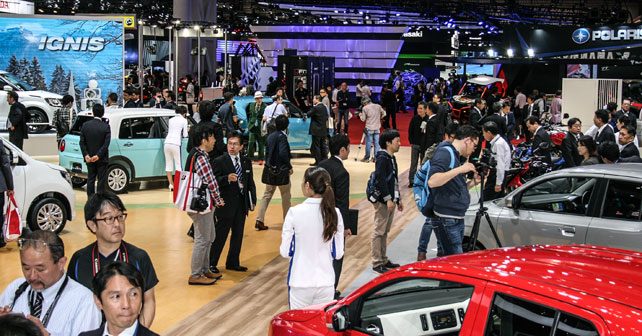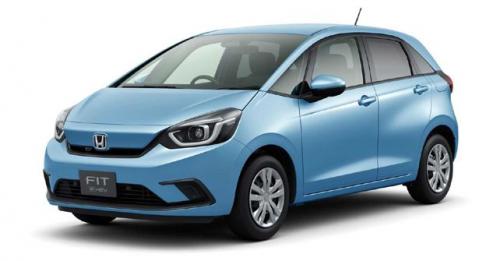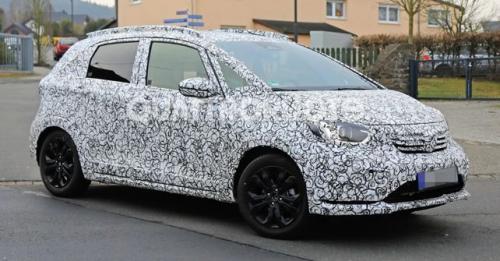The 44th Tokyo Motor Show pointed to what we can expect in the future. Some of the cars may have come across as impractical, inconceivable, downright bizarre, yet fascinating – but everyone would love to see these alluring machines on the road. The motor show picked up on a vast variety of trends – like driverless cars, lounges on wheels virutally, environment friendly vehicles, and, of course, our favourite sports cars. Here are some vehicles and concepts that will set your heart racing...
Honda Clarity Fuel Cell
The beauty about the Clarity is that Honda showcased the production spec version, basically letting everyone know it will hit the roads in Japan in spring of 2016 and then later in Europe and USA.The Clarity Fuel Cell uses hydrogen-electric powertrain that has a range of 700 kilometres on a single fill. The motor has an output of 130kW. Thanks to the 70MPa high-pressure hydrogen tank, it can be recharged in three minutes, now the only catch is you have to find a hydrogen charging station.
Honda Light Weight Super Sports Concept
This concept gives us a hint of what the small-displacement trend will be from Honda. The Japanese two-wheeler has taken a more aggressive design approach, which will help its new upcoming products compete with the likes of Kawasaki, KTM, Yamaha and even Bajaj.Though Honda has not revealed what engine displacement it will house, but this could really give the CBR250R a huge boost. It is safe to say that this concept will cater to the 300 and 500cc class.
Nissan IDS
The IDS concept or intelligent driving system is a hatch design, which will be able to drive by itself in stop-start traffic. After the initial “traffic jam pilot” features are implemented, Nissan will be adding technology that will allow the car to drive on highways in a way it can autonomously negotiate hazards and change lanes. The IDS Concept has five sonar sensors, five laser sensors, and 12 cameras. According to Nissan, this will lay the foundation for this technology for fully autonomous cars by 2020. It will be powered by a 60kWh battery pack and should be able to cover 320km in real time driving conditions.
Honda S660
This match box roadster is just ideal for India. Its compact, efficient and is powered by a 660cc three-cylinder engine fitted with turbochargers. With an output of 63bhp, it may sound like quite a kill joy, but the S660 is all about driving dynamics and it can take tight corners like a go kart. It’s top speed is 125km/h. It is available in both CVT and a six-speed manual. It doesn’t take a genius to figure out the latter is the more fun option. It has a comfortable and practical driving position too. The S660’s price is the same as a Honda Fit/Jazz in Japan, now imagine if Big H launched this car here in India.
Nissan Concept 2020
The red fiery 2020 Vision concept, inspired from the videogame Gran Turismo for PlayStation, gives us an indication of what the next generation G-TR could look like. According to Nissan, the rear active wing is raised or lowered according to speed, and at 300 km/h it pushes over 400kg of downforce directly onto the differential block. The powertrain utilises a high performance hybrid FR-4WD system with a V6 twin-turbo engine, combined with 3 motors.
Yamaha Sports Ride Concept
Yamaha Sports Ride Concept was the showstopper at Tokyo Motor Show. This two-seater sports car features a futuristic design as it has an aggressive front fascia with thin headlights and large air intakes. Its dimensions are similar to the Mazda MX-5 Miata. It uses Gordon Murray’s Formula One-inspired iSteam Carbon chassis technology. The car just weighs 750 kg as it is made from carbon fiber panels. The iStream concept is to basically create quick vehicles at low production costs. So could this very well be Yamaha’s answer to an affordable sports car. No details were given out on the engine specifications, but Yamaha is rumored to equip the concept with a 1-litre three-cylinder petrol rear-mounted engine that can produce up to 80 horsepower.
Suzuki Ignis
This quirky looking thing is a compact-crossover based on the Suzuki iM4 concept, which was unveiled earlier this year. Not much was revealed from the company, but it is 3679mm long, 1579mm high and 1478mm wide, which complements Suzuki’s versatile yet practical theme for the Ignis. For the international market, the Ignis wiil be powered by the 1.2-litre DualJet petrol engine mated with to a CVT gearbox. It also comes with a mild-hybrid system and has an optional 4WD system.
Datsun Go-cross Concept
The Datsun GO-cross concept, as the name implies, is a crossover that was specially created to meet the needs and preferences of a new generation of drivers and is aimed at being convenient, practical and fun. According to Datsun, the car can handle city lifestyle easily, but it also can be fun in the great outdoors. The overall looks is a mix of distinctly modern design elements with Datsun’s hallmark design language, and it builds on the acclaimed Datsun GO+ family of MPVs. The car was designed by a dedicated Datsun team in Japan. Although the concept does not come with four-wheel-drive, the Datsun GO-cross Concept has a higher ground clearance than the Datsun GO+ to enable it to handle rougher terrain with an extra degree of confidence. The result is a distinctive compact crossover that is modern, reliable, fun and attractive.
Toyota FCV Plus
The FCV Plus is a hydrogen-powered electric concept car, which is acutally like a hotspot as it can wirelessly share power with other vehicles. The FCV Plus can convert the hydrogen stored in its tanks into electricity and share it with other vehicles, or even buildings. It is driven by four electric motors, one in each of the wheels, which get their power from a fuel stack between the front two. The compressed hydrogen that feeds the stack sits behind the rear seats, just above a downward-facing wireless electric charging port. Its windshield and rear window doubles up as display monitors to broadcast words and symbols to other drivers. Though the FCV Plus is strictly a concept, this just shows what the future holds in the automotive world.
Toyota S-FR
The S-FR is a compact coupe concept, which is designed to be a lightweight, nimble handler. This baby coupe is designed with a front-engined layout and rear-wheel drive. The vehicle is slightly longer than the Mazda MX-5 Miata, but it keeps its roof in place and features four seats instead of two as Toyota wanted S-FR to be a practical car. Unfortunately, Toyota have not specified engine specs or transmission for the S-FR. The dashboard has a smartphone holder in the center and a single digital gauge display for the driver.

































Write your Comment